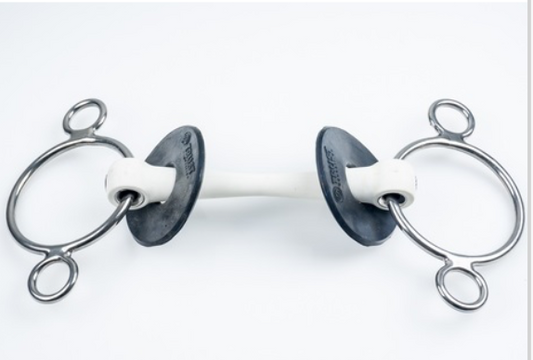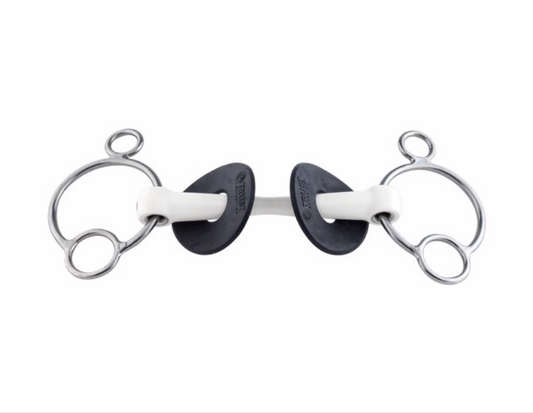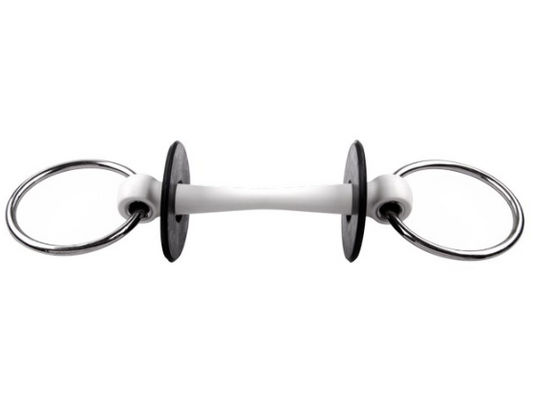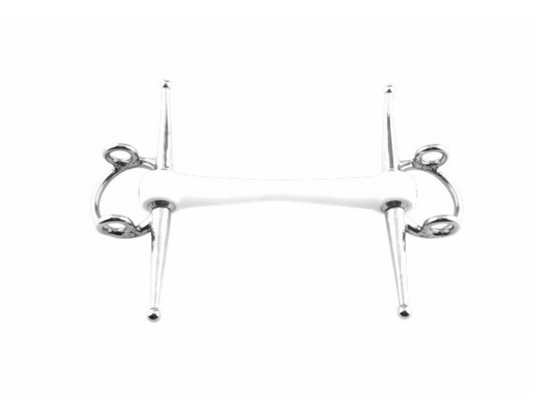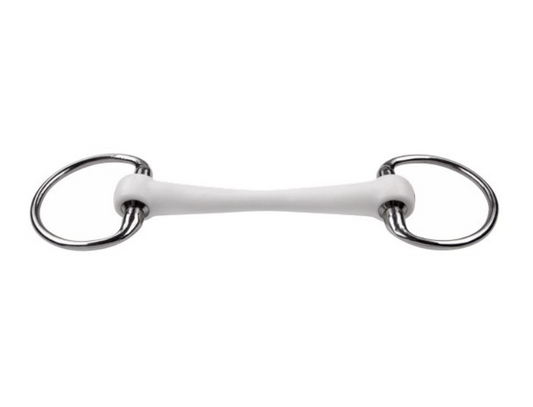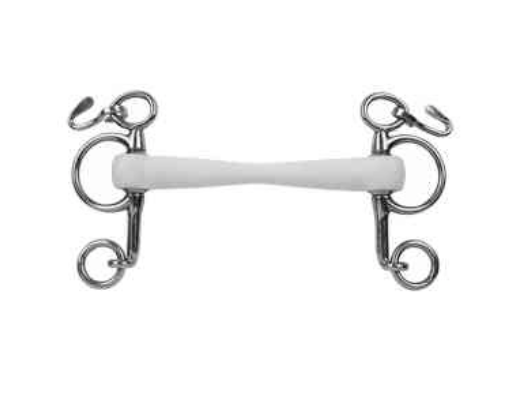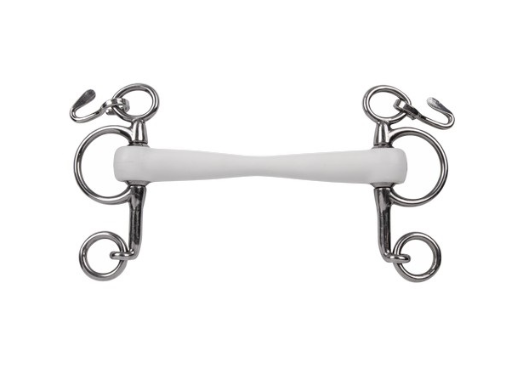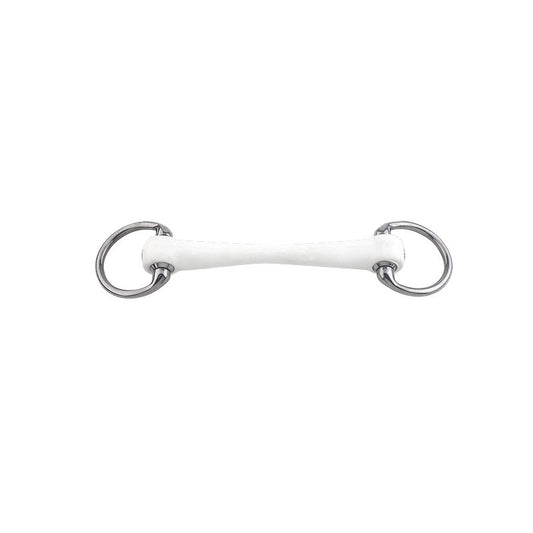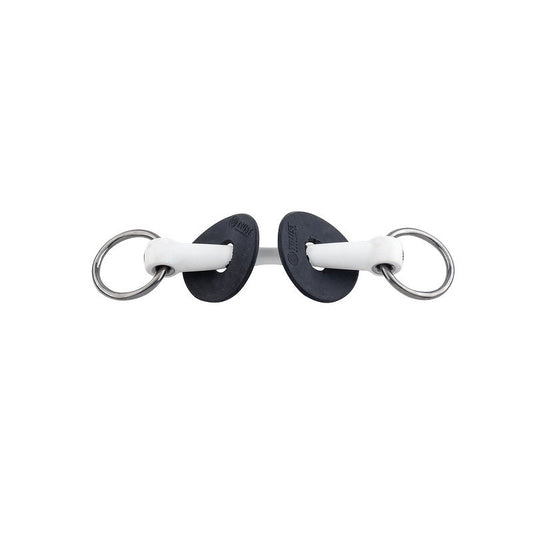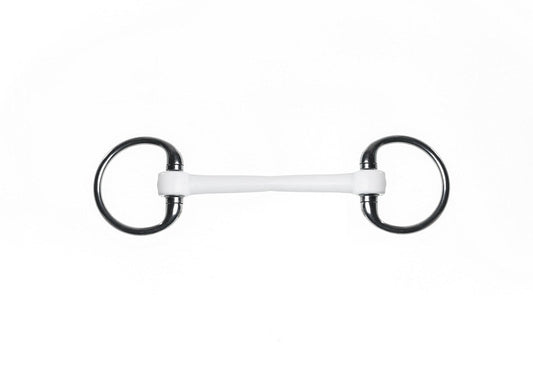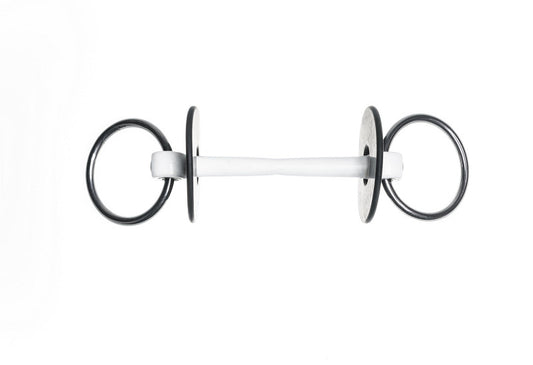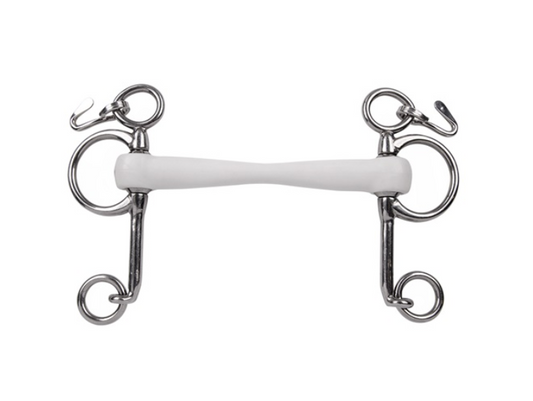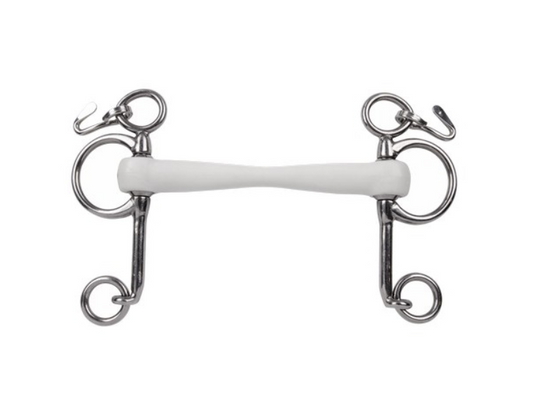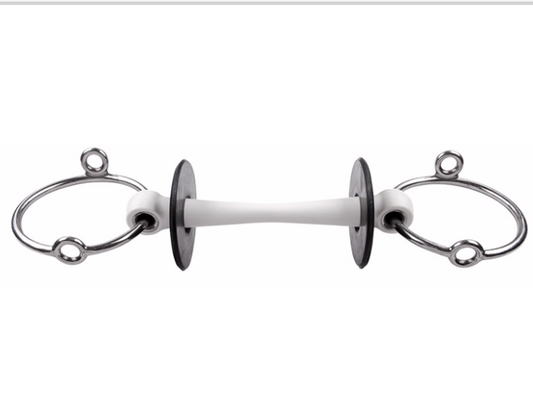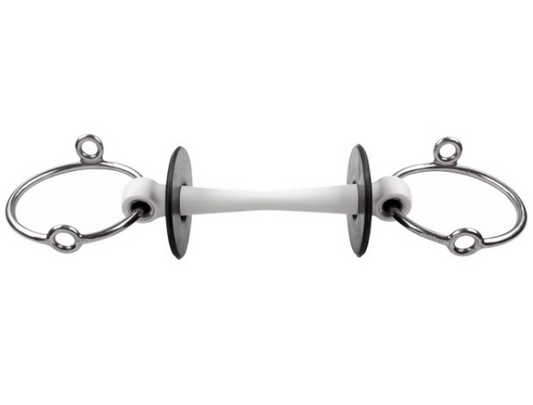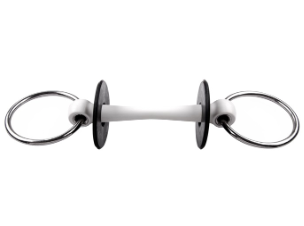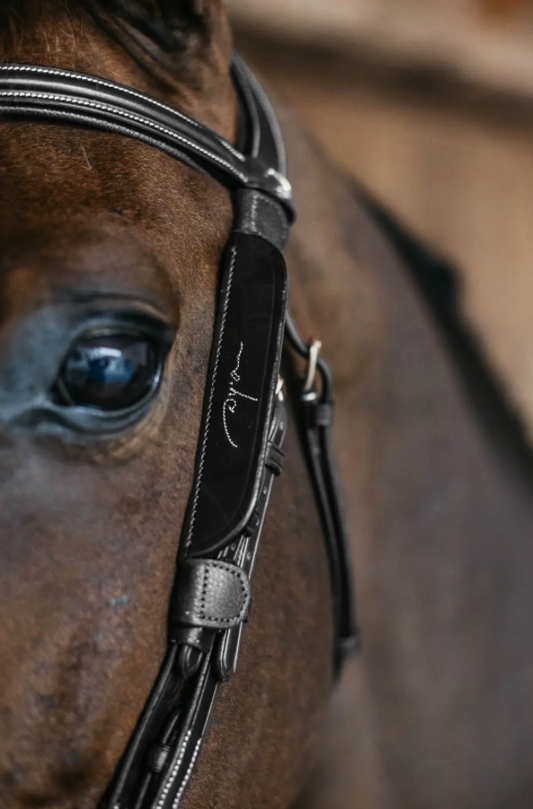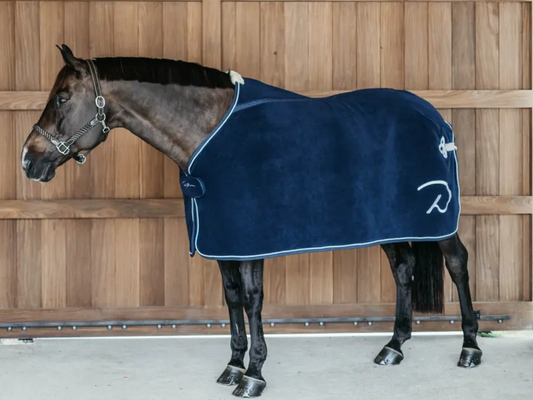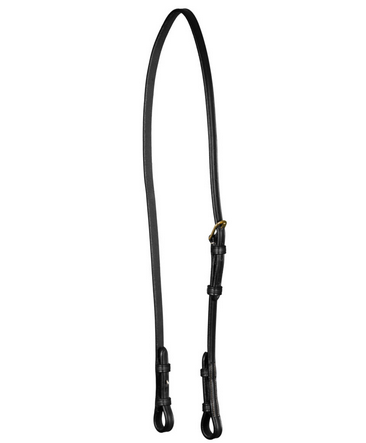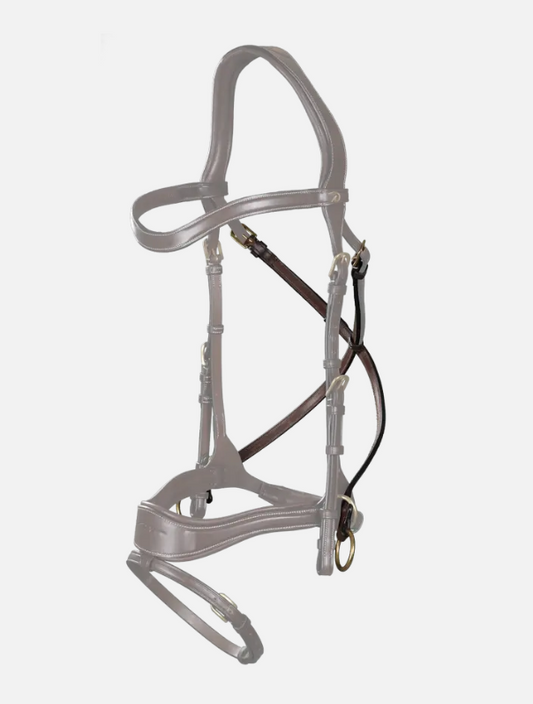Collection: Inno Sense Flexi Soft
The Inno Sense Flexi Soft bits are similar to the well-known NATHE Bits. They are made of elastic synthetic material and are very flexible. The bit features a flexible metal core. Because of the flexibility this is a friendly bit and horses accept this very well. The Inno Sense flexi soft is less suitable for very strong horses.
Bits from the Inno Sense collection can be used for every horse and are particularly suitable for young horses and/or horses with a sensitive mouth. The synthetic material is FDA approved, which means the material does not contain plasticizers and is non-toxic to people and animals.
Horses that are ridden with an Inno Sense bit follow the hand easily and accept the bit smoothly.
Discover a wide range of anatomically shaped bits for showjumping, polo and dressage. Trust bits are made for performance, comfort and the trust in the contact between horse and rider.(Sweet Iron, Inno Sense, Leather).
The Trust Equestrian bit range is available in 20 different cheekpieces and 3 different mouthpieces such as our leather bits, inno sense port medium, inno sense mullen, inno sense flexi soft and sweet iron.
-
TRUST 3 Ring Flexi Soft
Regular price R 1,763.00 ZARRegular price -
TRUST 2.5 Ring Flexi Soft
Regular price R 2,399.00 ZARRegular price -
TRUST Loose Ring Flexi Soft
Regular price R 1,999.00 ZARRegular price -
TRUST Full Cheek (Fulmer) Gag Flexi Soft
Regular price R 3,199.00 ZARRegular price -
TRUST Eggbutt Flexi Soft
Regular price R 1,978.00 ZARRegular price -
TRUST Baby Pelham Flexi Soft - Hard
Regular price R 3,065.00 ZARRegular price -
TRUST Baby Pelham Flexi Soft
Regular price R 3,065.00 ZARRegular price -
Trust Inno Sense flexi soft bradoon 2cm
Regular price R 2,530.00 ZARRegular price -
Trust Inno Sense flexi soft loose ring bradoon 2cm
Regular price R 2,070.00 ZARRegular price -
Trust Inno Sense flexi soft bradoon 1.5cm
Regular price R 2,530.00 ZARRegular price -
Trust Inno Sense flexi soft loose ring bradoon 1.5cm
Regular price R 2,070.00 ZARRegular price -
TRUST Pelham Flexi Soft - Hard
Regular price R 3,065.80 ZARRegular price -
TRUST Pelham Flexi Soft
Regular price R 3,065.80 ZARRegular price -
TRUST Loose Ring Gag Flexi Soft - Hard
Regular price R 1,973.80 ZARRegular price -
TRUST Loose Ring Gag Flexi Soft
Regular price R 1,973.80 ZARRegular price -
TRUST Loose Ring Flexi Soft - Hard
Regular price R 1,553.80 ZARRegular price
Frequently Asked Questions
Does Equi Boutique stock NATHE?
Most riders want a nathe bit but our Trust Inno Sense Flexi Soft range has the same flexibility as a nathe but the material is much softer.
How do I know if my bit fits?
If your bit fits well your horse will show happy behaviour. Make sure there is enough space for your horses tongue and that the bit does not push on your horses teet.
How do I fit a bit?
Always find a soft mouthpiece first that your horse relax's in. You can follow our blog for bit fitting tips. We also provide bit fitting consultations.
Which bit is best for a young horse?
We always recommend a soft mouthpiece for young horses. The flexi soft range and the leather range is our most popular for young horses.
What is the best bit?
The best bit is definitely our Trust Port Medium range for showjumpers and the Metalab Flexi collection for showjumpers.
Why Equi Boutique & Trust Equestrian
Every ride starts with a comfortable horse and TRUST between the horse and rider. The right bit makes all the difference. At Equi Boutique, we understand that riders expect both performance and style from their gear. Our range of Trust Equestrian bits combines premium materials, anatomical design, and elegant finishes to deliver long-lasting comfort for horse and rider alike.
Whether you compete in show jumping, dressage, play polo, or enjoy casual hacking, our collection includes options for every discipline. Each bit is hand-selected from trusted international brands such as Trust Equestrian, Velari Equestrian, Lami-Cell and Metalab These world renowned brands are known for their innovation, craftsmanship, and understanding of equine anatomy.
What makes a good horse bit
1. Strength
When referring to the strength of a bit it is important to understand that strength refers to how durable the material is. The last thing you want when riding your horse is that the bit snaps in your horses mouth and then you loose all your control which could be very dangerous and potentially fatal.
2. Material
Good quality, animal safe material is vital when manufacturing a bit. Not only do you need animal safe material you also need to ensure that the material is soft and the horse will accept the bit. At Equi Boutique we stock bits made of various material such as leather bits, inno sense bits, nathe bits, sweet iron bits, copper bits and titanium bits.
3. Fit
The fit of the bit is extremely important to prevent injuries and to ensure that the bit is providing correct and sufficient contact between horse and rider.
4. Durability
Bits made from incorrect material has a shorter lifespan and is potentially dangerous. Also some horse tend to chew on the bit. Should this be the case it is important that you select the correct type of material for your bits mouthpiece to ensure durability.
How to choose the right bit
1. Discipline
Every horse discipline has a set of rules that riders must adhere to. Certain bits are only allowed in certain disciplines. At Equi Boutique we provide Dressage bits, Showjumping bits, Showing Bits, Polo bits and flatwork bit. Download the FEI App to see which bits are legal for your equestrian discipline.
2. Fit
When buying a bit it is of utmost importance to make sure the bit is the correct size for your horses mouth. If you use the same mouthpiece but in different sizes your horse will react differently as the pressure points are different. Contact us to assist you in finding the correct size bit for your horse.
3. Material
When choosing the correct material for your horses bit the first step would be to determine whether your horse chews his/her bit. If your horse chews their bit your choices are limited to sweet iron and Titanium bits.
If your horse has a very sensitive mouth but chews the bit we would advise that you use bit wrappers or our Trust Sealtex Bandage to soften the feel of the bit for your horse.
If your horse does not chew the bit you have a wider selection of softer materials you can choose from.
Trust Bit range
Inno Sense Range:
The Trust Inno Sense collection has 5 different mouthpieces varying between shapes and hardness. Bits from the Inno Sense collection can be used for every horse and are particularly suitable for young horses and/or horses with a sensitive mouth. The synthetic material is FDA approved, which means the material does not contain plasticizers and is non-toxic to people and animals. All models have a rigid core which prevents the bit from snapping in the horses mouth and enhances the safety of the bit.
Horses that are ridden in an Inno Sense bit tend to accept the bit better, step forward into the bridle from behind and follow the hand easier.
The Inno Sense Flexi Soft bits are similar to the well-known NATHE Bits. The bit features a metal core in the form of a chain and is very flexible. The flexibility of the bit helps horses to accept the bit better. The Inno Sense flexi soft is less suitable for very strong horses.
The Trust Inno Sense Medium Port is made of elastic synthetic material, which is slightly harder than flexi soft. The Inno Sense Medium Port is slightly flexible. This mouthpiece has a port that creates space for the tongue and decreases the pressure on the centre of the horse’s tongue. The medium port range is ideal for horses whom has a sensitive tongue.
The Inno Sense Hard Port is slightly harder than the Medium Port. The Inno Sense Hard Port is hardly flexible. This mouthpiece has a port that creates space for the tongue and decreases the pressure on the centre of the horse’s tongue.
The Inno Sense Mullen is similar to the well-known Vulcanite brand. It is a straight bar that slightly bends forward. The bit has a rigid core that makes the mullen bar not flexible but the material around it gives the bit a soft touch. The mullen is a stronger option to the flexi soft range.
The Inno Sense Jointed combines the trusted design of a traditional jointed bit with the advanced, softer Inno Sense material. The single-jointed design applies pressure to the bars and sides of the tongue, giving more freedom to the tongue and encouraging the horse to engage with the bit while maintaining precise control. The key benefit of the Inno Sense Jointed Bit is its enhanced comfort. The softer material reduces discomfort and promotes better acceptance of the bit, especially in horses that are prone to resistance or overreaction with stronger bits. The Inno Sense jointed range is available in a bradoon and is more suited towards dressage.
The Inno Sense bits come in 15mm and 20mm thicknesses. The 15mm bits, often referred to as “slim,” are perfect for horses or ponies with smaller mouths, or when using a double bridle. Should you wish to order a 15mm mouthpiece please do not hesitate to contact us.
The core of the leather bit is made of reinforced nylon. The leather that is stitched around this core, is naturally tanned without chemicals. The saliva production softens the leather bit and makes it more pleasant for the horse. The flexibility in combination with the taste of the leather, makes the bit particularly suitable for horses with a sensitive mouth.
The Sweet Iron bits are made of steel and have a recognizable blue colour. Sweet Iron will rust when it comes into contact with (air) humidity, the surface rust tastes sweet and naturally stimulates the saliva production. This will cause the horse to salivate more, which in turn will encourage a better acceptance of the bit.
-
Dy'on Blinkers Fancy Stitching
Regular price R 609.00 ZARRegular price -
Dy'on Heavy Fleece Rug
Regular price R 5,499.00 ZARRegular price -
Dy'on Double Bridle Adaptable Cheekpieces
Regular price R 1,176.00 ZARRegular price -
Dy'on D Motion Straps
Regular price R 1,090.00 ZARRegular price

